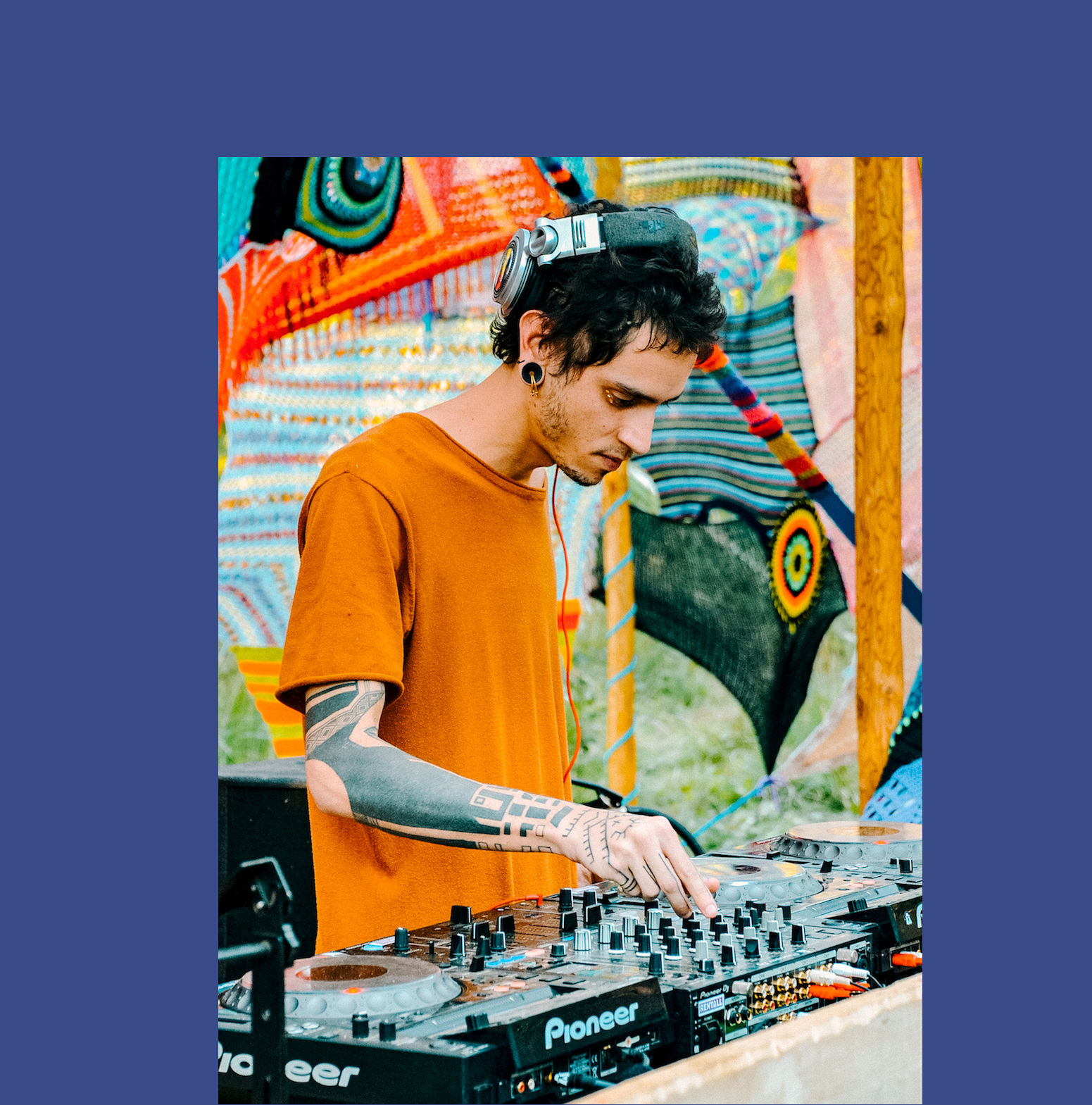Questioning Contrast through Vessels of Confluence: Excerpts from Kurup’s Voyage through Downtempo DJ-ing

Slow, wafting guitar melodies float into the fog-filled Candyland of Sensi stage. Mud-covered feet tap patiently on the dry earth, massaging her soil with every tender step. And Kurup himself, parachute-panted and tranquilly poised, nudges the dancing flock ahead.
Knitting together udu drum beats with bossa nova plunked guitar chords, Renato Rocha Lima (Kurup) sets the beckoning voices of Brasília atop organic atmospheres. Renato’s mixing style is starkly intuitive, led forward by the characters of the sounds themselves rather than his own objectives. Tinkling woodblocks bounce from right to left, as if the drummer herself was sashaying around the stereo field. Running water is injected into the mix, washing away fading percussion, and ushering in the drip-dropping plunks of aquatic microrhythms.
“I think it’s important to respect the recordings that I use,” says Renato. I remark on their deliciously grainy and spacious quality, and ask if they’re field recordings. “Of course,” he confirms. “The chants of Maracatu, for example, are not just about a single voice singing a melody. They are about the space, the moment, and the reason why they existed… capturing all of this is crucial to the recording.”
Attentive not only to the recordings themselves, but also to the spaces in which these recordings are presented, Renato is an astutely self-aware DJ. “In Europe, we [my partner Fernanda and I] are Brazilian — we cherish a palette of sounds unlike those lining European streets, and therefore invite others to embrace the sounds and voices of our home. In Brasília, however, we are very privileged. We are lighter skinned, we are middle class. We do not live the life of the indigenous nor the darker-skinned, and do not claim these sounds as being our own. I must therefore be cognizant of who I am playing for and what their own relationship is to this music — the personal, cultural, social, and spiritual underpinnings of that track for the person(s) I am playing it for.”
Long-tailed cirrostrati rush in, shrouding the sun-bathed sand beneath. Macroscopic synth morsels grind between your toes, intricate worlds within each pebble visible to the naked eye. Bird calls emanate from atop wooden fixtures, speakers transducing their physicality from far-off mountains to the current moment. Smile-eyed dancers whistle back in response, chirps intermingling in transnational symbiosis. The sun descends further into her home.
“There was a moment when I realized, ‘Maybe parties are a place where I can go beyond just listening to music.’ It was a place where I was also sharing experiences with other people, and enjoying art. Bodies, images, and sound… everything ebbing and flowing in the same space, coming together in an incredibly dynamic, creative place.”
For Renato, the liberating multidisciplinarity of party spaces was a crucial find. Coming from visual arts’ academic refineries, Renato had long since exercised his artistic muscle in the ocular realm. Yet, he felt an itch in this muscle — for it to be one with a greater range of motion, and to discover its inherent buoyancy that so desperately wished to break free from the coordinate-binding sink-weights of academia. At these parties, sound, light, colour, and flesh all embodied the ephemeral beauty herself, the goddess of aesthetic emotion that came to inhabit not only a single melodic line or gallery exhibition, but an entire cultural phenomenon. The party scene provided a space where Renato’s extrasensorially lustful chops could longingly sink into rich sounds and textures that came together in citrus light and sweet clarinets melding into amber celebration.
“It is a place of cultural formation. It is a place where you learn a little bit more about others, and about yourself.” Peeling back feathers of myriad beauty, we see the beating heart of strength, jovially pushing at its skeletal confines. The fortitude of camaraderie that supports these parties is evident in the community that keeps it alive, that prospers within its space.
“When you see street art, there is some kind of question that it’s trying to ask, some boundary it’s trying to question. In Brazil, we call graffiti ‘pichação.’ They are usually very simple tags […] made by poor people as territorial geographical mark, a questioning of properties. ‘I have nothing and you have all, so i put my mark here to express myself somehow.’ Where else do you see this kind art? In an art gallery? [And you have to] go inside a fancy theater to see music?”
Renato goes on: “[In the vein of graffiti], most art in Brasília is very simple and folk. Consequently, music also. Latin american folk music… I connect with people through this. If you live in a place where the contrast is too big, then you live the contrast. You look at people and ask, ‘is he rich? Is he poor? Is he black or is he white?’ In the parties [that I speak of], which take place on streets rather than in closed doors, we may also cancel barriers.”
In the realm of the party space, the immediacy of DJ-ing gives space for one entity fading into the next and simultaneous confluence with its sonic neighbor. So too may communities that are otherwise starkly divided – be it by police force-quarantined “beautiful art and kind people” or likewise socioeconomically confined gallery spaces – come together as one – “right here, right now, listening to the same music.”
Lana Harris DJs/writes/beyond for The Darker Side. The Darker Side has air every Saturday night 10pm-6am and Sunday night 10pm-5am.